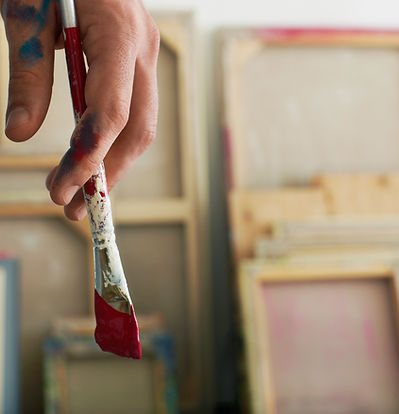What's new in the Studio?
Follow my artistic journey and thoughts:
Art Show 2022'
November

The weekend before Thanksgiving at Zoll Studio, we have an annual Art Show that features about 900 original pieces of artwork produced by staff and students. ***Take classes with me at Zoll Studio so you can be apart of this prestigious Art Show in Timonium, MD.
Doing it Differently:

Have you looked at a variety of artists in what they are doing DIFFERENTLY? Students should study different ways of doing art and research inspiring artists to generate ideas. From that inspiration, who do you become as an artist, and how are YOU different?
Why start young?

Research shows that kids who do art can gain development in:
eye-hand coordination, large and fine motor skills, right-brain activity, observational skills, spatial awareness, creativity, imagination, connective thinking skills, questioning skills, organizational skills, texture and sensory exploration, language and story telling, and concept understanding, including shapes, colors, orientation, opacity, amount, value, line quality, adding and subtracting materials for 2D or 3D effect, mark-making, exploring types of art supplies, papers, adhesives, cutting materials, etc. The list goes on and on!!! EVERY subject can be taught through using Art, such as History, Math, Science, Language, Computers (Digital Art), Cooking, etc. ART is a fundamental form of education, innovation, and exploration.
Behind the Scene
On-line v.s. Studio

The Way I See Art: An Interview with Elicia Frazier
"Most people want to draw or paint similar to photographs, but if you take a picture and print it onto canvas or paper, what makes you different? Being an artist is a way to create more than what a photographer can capture. As an artist, you can create your own composition, using diverse materials, envisioning thought-provoking enhancements, determining how it may be perceived. Furthermore, you can dictate the mood by using a specific color gamut, adding various edge qualities to capture an emotional connection. Versatile layers of translucency or opacity help create your vision or concept. You become a "visionary" by creating your own brilliance:
What do you want to say?
How do you want people to feel?
What makes you an artist?
How do people recognize you and YOUR voice?
Being an artist is a never-ending journey, as you question everything, becoming all that you can be in each and every moment of your artistic evolution. Art evolves, as we evolve in our questioning." -Elicia

There are ARTISTIC pro's and con's to both on-line verses being in the studio.
On-line Pro's:
1. Getting to see your work 2 dimensionally, to really study shapes, positive/ negative spaces, plumblines and proportions. (Great for beginners!)
2. See your artwork and the reference side by side to compare and contrast better.
3. Teacher can make notes all over your artwork and send you the notes, without physically touching your actual artwork.
4. Teacher can throw references and personal artwork quickly into photoshop to show you value relationships.
5. Teacher can plumbline and grid compositions easily for you to see accuracy in shapes, proportions and relationships.
6. Teachers can easily bring up examples from their computer to visually explain something to a student.
7. Choosing your own supplies and media.
In Studio Pro's:
1. Working 3 dimensionally without the cheat of seeing anything from a 2 dimensional perspective.
2. Teacher can set up lighting and room atmosphere to give artists better lighting for their 3 dimensional still lifes or portraiture.
3. Student will be able to observe real values from real life. Photos flatten the values and edge qualities that give more form to your artwork.
4. This approach is best for advance students because artwork from real life is more challenging. Mimicking 2D to 2D is easy. Observing 3D and creating 3D form to be highly believable is more difficult.
5. Teacher can be more hands on if a student is really struggling and needs to see something demonstrated directly on a students artwork.
6. Being apart of an art community and making art friends more personally.
7. The teacher selects the best quality art tools and media that makes for no hassle on your end.

